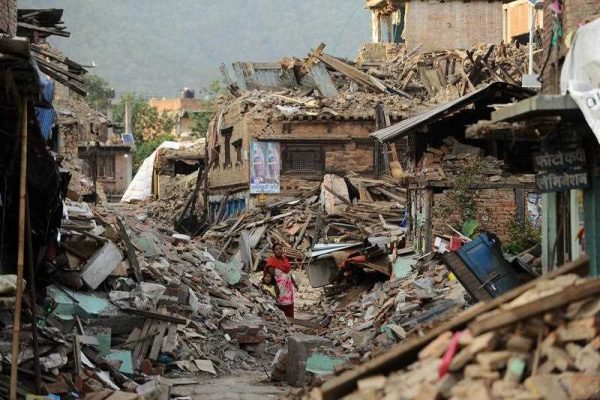This is a very tall order given the government’s poor track record of mismanagement, lack of coordination and failure to deliver basic services.
So far, the government has established a National Reconstruction Fund to which it has allocated US$200 million. The Asian Development Bank (ADB) has pledged another US$300 million and other donors will surely follow suit. The ADB has also established an earthquake response team that will work with other partners to assess losses and estimate the long-term investment needs. After the assessment finishes, Japan will convene a donor group meeting.
Until then, the Nepal government should pursue four immediate policy actions.
Until 2006 Nepal was plagued by a decade-long Maoist-led civil war that left 16,000 dead. Seven years on, the constituent assembly has been unable to draft a constitution amid fruitless debates and party rivalry. Local government elections have not been held since 1999; instead, civil servants run the system. Corruption is pervasive at all levels. The prime minister’s speech to the nation a few days after the earthquake disappointed many, and several top political leaders were conspicuously absent in the early days of the crisis.
In this context, it is vital that the government set up a monitoring system to oversee the newly-established National Reconstruction Fund. To ensure transparency and accountability in the use of resources, this monitoring system should include watchdog bodies and community organisations. The government should provide technical and financial help, but must get local people and communities involved in planning, designing and implementing the rehabilitation projects.
Nepal must rebuild some 500,000 houses that have been flattened and 270,000 that have been damaged, mainly in the villages. The government could consider using innovative technology such as the ‘Habitech Building System’ (developed by the Asian Institute of Technology) to construct cost-effective yet sturdy houses. These houses should be designed to complement and blend in with the Nepalese village scenery, which attracts over 800,000 tourists every year.
The country must also introduce innovative income-generating schemes to fix a major flaw in Nepal’s economic development model. Nepal has become one of the most remittance-dependent economies in the world. Before the earthquake almost 1500 workers left the country per day to seek jobs abroad. While this flow has ebbed and some workers have returned home to help out their families, without jobs in the country to keep them in Nepal, they will surely seek work again overseas.
Programs like the ‘cash for work‘ program run by Mercy Corps in Aceh in the wake of the 2004 tsunami and in the Philippines after the Super Typhoon Haiyan will provide jobs and income in exchange for work completed in public projects, including building schools and developing infrastructure. Simply doling out money for rehabilitation is not a good idea; it will have adverse budgetary and monetary impacts.
Finally, Nepal should strive to become a ‘land link’ between China and India, as it was in a bygone era. It should improve internal and cross-border connectivity with the help of various development partners. Such a move would result in a more balanced development strategy for the country. Nepal’s founding member status in the China-initiated Asian Infrastructure Investment Bank and its support for China’s Silk Road Economic Belt policy are steps in the right direction.
Nepal experiences a major earthquake every 100 years or so. In 1934, it was ravaged by a quake which registered 8 on the Richter scale. Scientists had issued strong warnings about the likelihood of another one. The government had legislated a new building code in 1996, but the code was poorly implemented because of poverty and poor governance across the country. An important lesson for other countries prone to natural disasters is to be prepared. It is not good enough just to have laws and codes, they must be enforced. But, especially in developing countries, this is easier said than done.
Pradumna B. Rana is Associate Professor and Coordinator of the International Political Economy Programme in the Centre for Multilateralism Studies at the S. Rajaratnam School of International Studies (RSIS), Nanyang Technological University, Singapore. He was previously a senior director at the Asian Development Bank (ADB).
This is a revised version of a commentary that was first published here as an RSIS Commentary.

